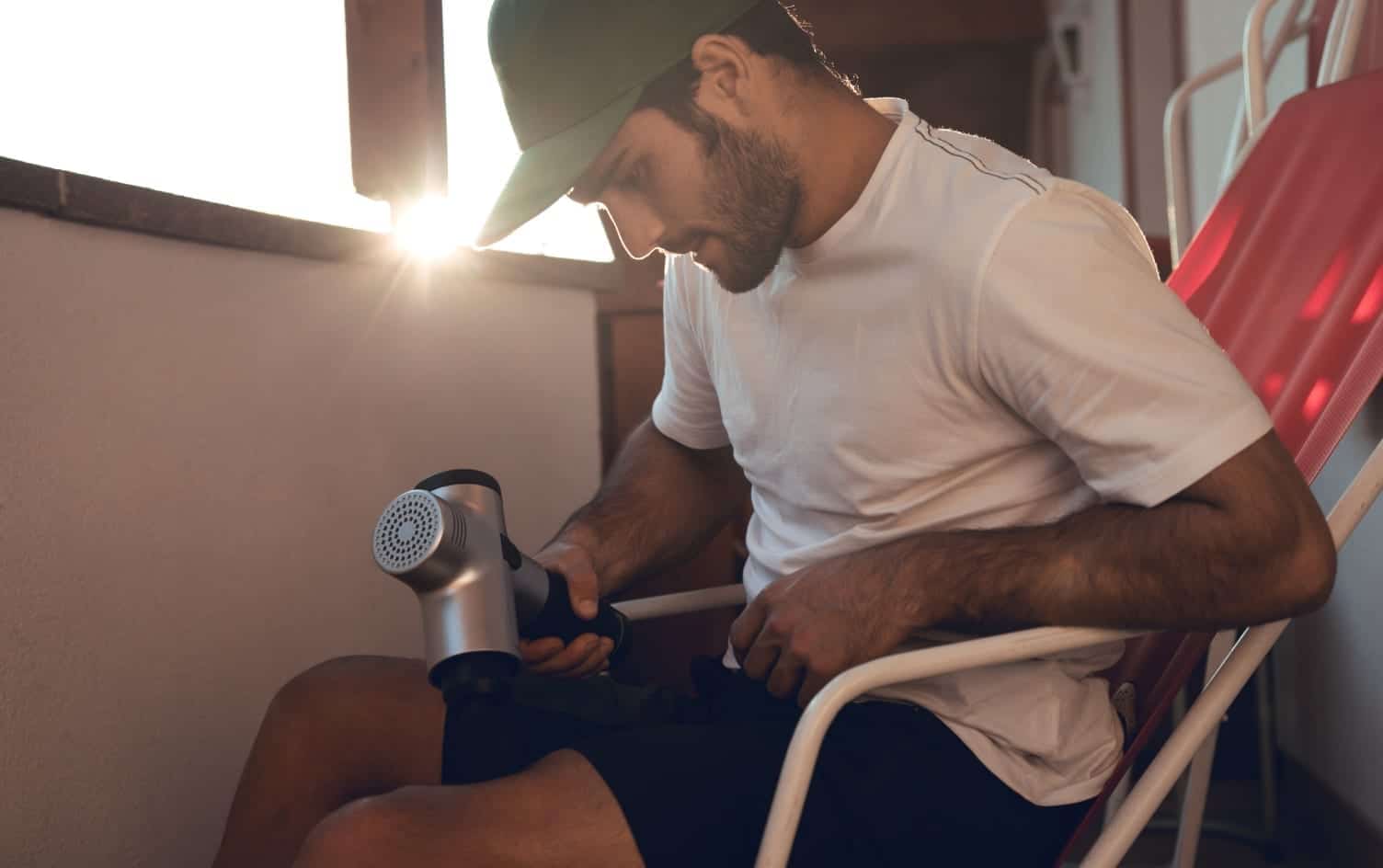Over the past few years, percussive massage guns have become a popular recovery tool, finding favor among doctors, trainers, professional athletes and fitness enthusiasts. They look and sometimes even sound like power tools, but these handheld devices are meant to make you feel better — by increasing blood flow, breaking up tension, decreasing soreness and improving range of motion — all things that can lead to better warmups and speedier recoveries.
Massage guns work by sending direct vibrating pulses through your muscles. According to a study in the Journal of Clinical & Diagnostic Research, vibration therapy and traditional massage are both effective at reducing delayed onset muscle soreness. But in addition to combatting pain, vibration therapy also proves helpful in decreasing the levels of lactic acid in your body post workout. So, while static recovery items like foam rollers can dig into tight spots and loosen muscles, the vibration advocates may be onto something.
To learn more, we spoke with Josh Orendorf, a doctor of physical therapy, certified personal trainer and the owner of Paceline Physical Therapy in Franklin, Tennessee.
WHY TRY A MASSAGE GUN?
“Massage guns are typically used to ease tight muscles and temporarily increase circulation,” he says. “I’ve found them to be most beneficial immediately before a workout.” He mentions that massage guns are great at increasing blood flow to local muscle tissues. This works twofold: it can help to prepare your body for its workout while also potentially reducing the risk of a muscle strain.
Orendorf notes that massage guns can also provide benefits after a workout. The percussive pressure helps to flush lactic buildup out of the muscles and decrease soreness.
HOW TO USE A MASSAGE GUN
While your physical therapist or chiropractor may use a percussive massage gun as part of your treatment, it’s also possible to employ the device yourself. Below, Orendorf shares four tips when going the DIY route.
- Start slow. Massage guns can be really powerful, so be careful, especially if you’re already sore. “I start all my athletes on the lowest setting and increase from there.”
- Avoid bone. If you hammer away at a bone, you likely won’t cause any damage, but it’s not going to be comfortable. Instead, Orendorf suggests starting on the larger muscle groups, like your glutes, quads, calves, lats and traps until you get the hang of navigating the gun. He offers this pro tip: “Use your other hand as a guide to help identify bony sections to avoid.”
- Keep it moving. “Make sure you’re not pressing too hard or staying in one spot for too long,” says Orendorf. “You can easily create more harm than good. Keep the gun moving for the best results.”
- More is not better. While a 90-minute massage by actual human hands can feel amazing, you don’t need 90 minutes of gun work. Orendorf likes to focus on each body part for a few minutes before moving on to something else. This is enough time to get the full benefit of the treatment without causing trauma or discomfort to the area.
BEFORE YOU TRY IT, KNOW THIS
As with all things, you want to be smart and cautious when first using a massage gun. “This seems pretty obvious, but be sure to avoid things like major arteries, nerves and internal organs,” says Orendorf. “Pay attention to how your body is responding, and back off if something doesn’t feel right.”
Orendorf also stresses that massage guns are not a one-stop solution to all your physical ailments. Instead, they’re one part of a holistic treatment plan. “I love using a massage gun as part of an athlete’s rehab program, but they’re not going to magically fix an injury,” he says. “Be sure to reach out to a medical professional if your injury isn’t getting better.”




